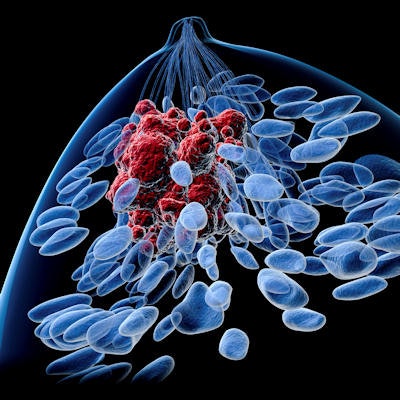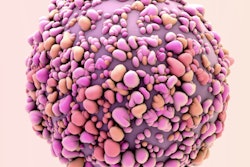
The performance of computer-aided detection (CAD) software for breast cancer screening could be improved by initially hiding CAD findings from radiologists as they review images, according to the findings of a small study published on May 7 in the Journal of Experimental Psychology: Applied.
The first CAD software application was approved in 1998, and the technology initially was proposed as an aid to radiologists reading large numbers of screening mammograms. But CAD never seemed to live up to expectations, with some studies finding that it had no positive effect on radiologist accuracy.
But could the problem be with how CAD is being used? In the new study, researchers developed a study that revealed CAD markings only after a user clicked on an image region. Such a progression could be more suited to an environment where the prevalence of targets -- in this case, cancer -- is very low.
"Researchers typically evaluate the efficacy of CAD at high prevalence, but these systems are generally used [for] low target prevalence in the world, where cancer screening tasks are uncommon," wrote the authors, led by Trafton Drew, PhD, an assistant professor of cognition and neural science at the University of Utah.
For their study, the researchers created 384 mammography-adjacent images that could be "read" by students at the University of Utah. The images contained lines that were considered a target when they perfectly intersected to form the letter "T" and a distractor if they formed the letter "L" or an imperfect "T".
The researchers asked 30 students to look for "T" targets using four different blocks of images:
- High target prevalence (50% of images contain a target) with a CAD system
- High target prevalence without a CAD system
- Low target prevalence (10% of images contain a target) with a CAD system
- Low target prevalence without a CAD system
For all scenarios, the students were substantially less likely to identify a target if the CAD software didn't detect that target, too. However, this phenomenon was even greater for the blocks of images with a low prevalence of targets.
"If participants come to expect that targets will generally be marked by the CAD system, it may lead them to adopt a more conservative criterion for any item that was not marked," the authors wrote. "If this is the case, we might expect that if we could create a CAD system that did not lead to a concomitant shift in criterion, it would reduce the observed larger costs associated with CAD at low prevalence."
This inspired the researchers to recruit 31 new participants for a second experiment. The second trial was identical to the first except that the CAD software findings appeared as a text box only after the user had already selected a region of interest.
The new system produced a small but significant benefit for blocks of images with low target prevalence, but not for groups of images with a high prevalence of targets. Furthermore, the students' performance was not influenced by CAD misses, suggesting the new model mitigated some of the software's downsides.
The researchers noted their findings are preliminary, and more research is needed to evaluate whether the effects might translate to screening mammography and other real-world applications. Nevertheless, the results demonstrated an interactive CAD software could be something for researchers to further investigate.



















